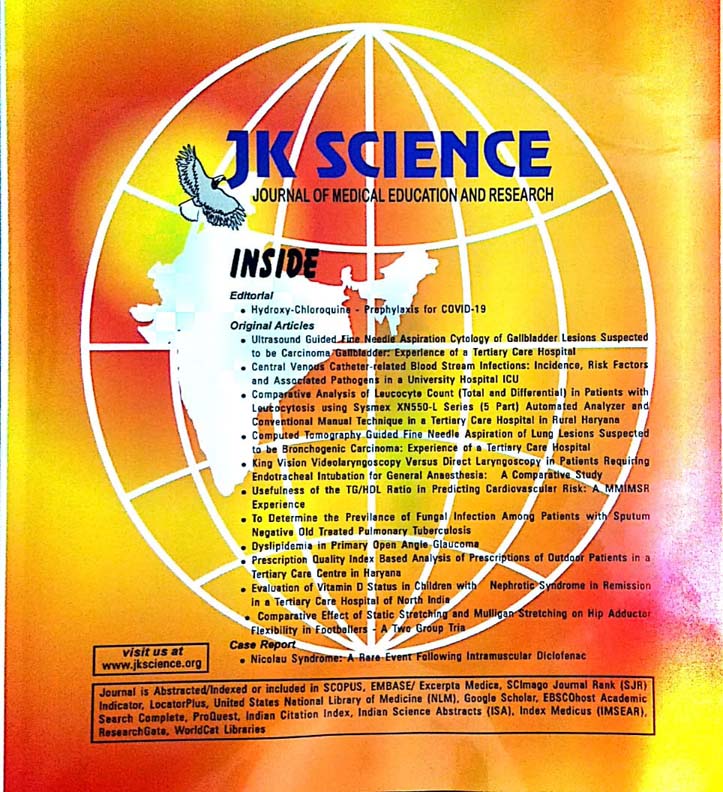Prevalence of Extended-Spectrum Beta-Lactamases (ESBL) Production Among Escherichia coli and Klebsiella pneumoniae Isolates in a Rural Tertiary Care Hospital of Haryana
Keywords:
ESBL, Escherichia coli, K. pneumoniae, DDSTAbstract
Background: Extended-spectrum beta-lactamase producing Enterobacteriaceae, the most common being Escherichia coli and Klebsiella pneumoniae are considered as the most dangerous one with hardly any antibiotic left for treatment of infections caused by these bacteria. There is paucity of reports from rural hospitals especially from India in this regard.
Purpose: To find out the prevalence of ESBL producing E. coli and K. pneumoniae isolates from patients with both HAI and CAI in a rural set up and to find out a reliable and cost-effective method for detection of ESBL production.
Material and Methods: A total of 300 Enterobacteriaceae isolates, E. coli (n=252) and K. pneumoniae (n=48) isolated during the study period were analysed. 55.7% isolates were obtained from patients with community acquired infections and 44.3% were from hospital acquired infections. These isolates were subjected to ESBL detection by Kirby-Bauer disc diffusion method using third generation cephalosporin discs, HiCrome ESBL agar, Vitek 2 system and double disc synergy test (DDST).
Results: Considering DDST results as gold standard, a total of 222 (74%) isolates comprising of 196 E. coli and 26 K. pneumoniae were phenotypically confirmed as ESBL producers. Comparing this result, other methods viz. HiCrome ESBL agar and Vitek 2 system were equally sensitive and specific for ESBL detection. Antibiogram of the ESBL-producing isolates showed higher resistance rates to cephalosporins other non-cephalosporin group of antibiotics viz. ampicillin, amoxyclav, aztreonam, ciprofloxacin, co-trimoxazole and nalidixic acid. The ESBL producers showed low degree of resistance against aminoglycosides and carbapenem group of antibiotics.
Conclusion: The present study showed high prevalence of ESBL positivity among the E. coli and K. pneumoniae isolates. HiCrome agar for detection of ESBL production could be a simple and cost-effective method.
Downloads
Downloads
Published
How to Cite
Issue
Section
License
Copyright (c) 2021 JK Science: Journal of Medical Education & Research

This work is licensed under a Creative Commons Attribution-NonCommercial-ShareAlike 4.0 International License.





